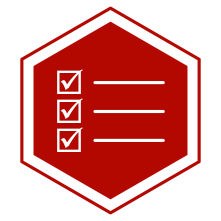Here’s a fact worth remembering: your carrying cost - the total cost accrued by you for holding stock over a period - can spiral out of control if you’re not careful. It doesn’t help that your inventory is one of your most significant investments and it’s costly to stock the wrong items. But, if you manage your costs, you’ll stand a better chance of turning a profit.
Part of this balancing act includes finding various opportunities to reduce your holding costs. And that’s what you’ll see below. More importantly, we explain what you can do from a practical point of view to reduce your costs around your inventory. After all, the last thing you’d want is to sit with rising inventory value, suffer the consequences of poor stock control, or both.

1. Base your stock on consumer demand rather than expectation
If you want to reduce your holding costs, the most obvious route is to base your ranging decisions on consumer demand. That’s because in taking this approach, you can ensure that you only invest in inventory that you know shoppers will purchase.
Of course, it’s important to note that this isn’t a failsafe. It’s a delicate balance between stocking the right amount to cater to the demand and stocking too much that you find yourself sitting with excess inventory you can’t sell.
There is also the point that you need to spend money on stocking products that don’t have a high demand. In the case of these products, it’s best to order minimum stock.
Fortunately, there are many actions you can take to ensure you get this right.
For one, you would need to study and understand any sales and seasonal trends to ensure you buy the right stock at the right time and in the right quantities. You can achieve that by analyzing historical data to measure previous demand for specific product ranges. That will assist you in estimating the consumer demand during particular events, occasions, or promotions.
If you have yet to open a store, you might rely heavily on any market data to find out what’s selling and use the information you've found when deciding on your range.
Another opportunity is to build and implement data-driven planograms. Planograms use sales and units data for a specific period to help you determine the demands for your chosen category. In doing so, you can also discover the quantities to order using the planogram’s suggested product capacities.

2. Improve the layout of your storeroom and warehouse
Stockroom organization is one of the many keys to your retail success. As mentioned in a previous piece, while it might not be the most exciting part, the rest of your business can suffer if you don’t organize it correctly.
Improving your back of house includes arranging it according to your store floor flow and layout. But that doesn’t mean it should be an exact carbon copy. Instead, your storeroom should have all categories grouped according to the department. Doing this not only allows you to be more efficient with your storeroom space, but ensures that when the time comes for you to replenish your shelves (or search for stock for a customer), you can do so quickly.
[Free Demo] Find out how DotActiv software can help you make the most of your inventory management
That said, there are several factors to consider when improving your layout.
The first, as we mentioned, is to understand that you shouldn’t plan your storeroom precisely as your front of house. That's because your space allocation needs to allow for fluctuating stock levels as it moves to your shop floor and replenishes from your supply chain.
Another is to acknowledge your receiving area. For a warehouse, receiving is arguably the most critical function. It’s thus essential to ensure you have enough room for your staff to carry out all the necessary activities from breaking down pallets to counting items.
For your storeroom, it’s a good idea to consider the distance of your merchandise to the shop floor. For example, it’s worth positioning those categories with larger merchandise closer to your shop floor.
The nature of your product will also play a role in where you position them. If it’s a perishable that needs refrigeration, you’d be limited in where you can place it. It’s the same for storing hazardous items such as pool chemicals or other insecticides as they would need to be positioned in a specific way.

3. Sign long-term agreements with your suppliers
Signing a long-term agreement with your supplier makes for the perfect opportunity for you to reduce your carrying costs. Here’s why:
These agreements allow suppliers to up their capacity and gear their factories up to production with the assurance that they will be doing business with you on a long-term basis. This investment often reduces the costs of production on their side because you’ve locked in the price of procurable materials. This saving on their part would typically pass on to you too.
More than that, there is the point that it eliminates any unpleasant surprises around buying prices and both you and your supplier can feel secure since you can reduce any unnecessary costs around sourcing and renegotiations.
At the same time, your supplier would hold stocks for you, thereby reducing the amount of inventory that you would need to carry in your storeroom.
Of course, as with our above point about storeroom layout, there are factors you need to take into consideration when signing such agreements.
Before you begin negotiating, you do need to set your objectives and decide where you can or can’t compromise. For example, if you’re ordering supplies in bulk, you might want to find a supplier that will offer you a discount. You would also do well to run checks on a supplier if you’ve never used them before to ensure they can fulfill their agreement.
It’s also important to research any potential suppliers to find out how valuable your business is to them. Your bargaining power increases in direct proportion to your potential supplier’s need for your business. If they have numerous competitors or are a new entrant to the market, you’ll be in a stronger position than if they have a monopoly.

4. Consider the negotiation terms in your supplier agreement
While you can sign long-term agreements with your suppliers, if you want to reduce the cost of holding stock, you need to dig into your negotiation terms.
Knowing them will give you a foundation from which you can work with your suppliers. As a side note, it can also help your suppliers to understand any agreements they enter.
One way to reduce your costs is to reduce your supplier lead time. Higher lead times from suppliers mean there is a more significant amount of safety stock that you would need to carry to fulfill all orders. That increases your carrying costs.
Maximise the selling potential of your shelf space with DotActiv software
But, by negotiating faster supplier lead times, you give your planners more flexibility when reordering inventory. This allows for less stock to be carried, thereby reducing your short-term carrying cost as well as the long-term risk of holding items that could end up becoming obsolete.
You would also need to optimize your order size and purchasing frequency.
With accurate demand forecasting and purchasing practices, you can support your strategic goals of ordering enough stock to meet ongoing customer demand while not carrying too much extra inventory to keep your costs under control.
That said, there will be times when you do need to return goods that haven’t sold. For such instances, you should have a sale or return policy agreement where your supplier will agree to take back surplus stock that you can’t sell.
While that allows you to mitigate risk, you can also capitalize on the opportunity of taking larger order quantities with no chance of overstocking or increasing your carrying costs.

5. Invest in inventory management software
A final opportunity for you to reduce your holding costs is by investing in inventory management software. An inventory management system is a tool for organizing your inventory data while robust software can help you first to reduce your costs and also establish a desirable re-order point.
That’s because it allows you to receive items in a warehouse or other location, ensures you can cut down on obsolete inventory and spoilage, and helps you to avoid missing out on sales due to out of stock situations.
More than that, this software will help you to keep track of what stock you have at every single one of your locations. These locations include your stores, stockrooms, distribution centers, and even your transport vehicles.
It’s worth noting that if you connect your software to a space management system, you can also ensure that your replenishment is as efficient as possible.
Conclusion
Part of DotActiv software includes an assortment planning tool that helps you optimize your inventory to offer a product assortment that will please your customers. More than that, it’ll help you to spot signs that your inventory plan needs work. You can visit our online store here to find out more or book a meeting with a DotActiv expert.


